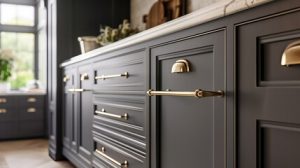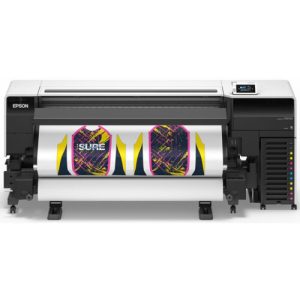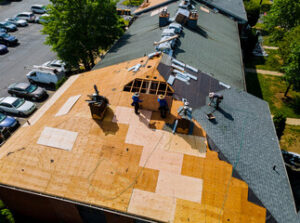Home Additions Boston is a great way to accommodate a growing family or add more space for entertaining. It can also enhance functionality and increase your property value.

However, this type of project can be expensive and requires significant upfront investment. It is important to choose a remodeling professional with experience and knowledge of local building codes.
Adding home additions can be an expensive project. It is important to consider all the costs involved in order to make a budget and stick to it. Home additions can add a significant amount of value to your home, but it is important not to go overboard.
The size of the home addition will impact the overall cost. The more square footage added, the higher the price tag. Other factors that influence the cost of a home addition include location, design, and materials. Choosing high-end finishes and fixtures can significantly increase the cost. Also, a larger project will require more labor, which increases the total cost of the project.
Another major factor that impacts the cost of a home addition is its complexity. Detailed architectural designs and intricate features can add up quickly. A professional architect can help you create a unique space that meets your needs and fits within your budget.
In order to lower the cost of a home addition, it is important to consider how the new space will be used. This will help you prioritize features and select the most appropriate materials. It is also a good idea to shop around for financing options. Many contractors offer financing through mortgages, equity lines of credit, and other loans. Lastly, it is important to keep in mind that most renovation projects tend to exceed their original estimates.
Before starting the construction process, it is a good idea to make two lists: one with your “must-haves” and one with your “wish list.” This way, you can ensure that your non-negotiables are met while still leaving room in your budget for extras.
It is also a good idea to anticipate future needs. This can help you plan an expansion that will be functional and useful for years to come. Considerations such as a growing family, career changes, and changing lifestyles can impact the type of addition you need.
If you’re planning a second-story addition, be sure to factor in additional costs like foundation work, plumbing, and electricity. Also, don’t forget about local zoning laws, permits, and inspections.
Design
A home addition should seamlessly integrate with the existing house, both structurally and aesthetically. It should also meet your functional needs and enhance your lifestyle. A well-designed addition can increase your living space and boost resale value.
Before beginning construction, it is important to establish a budget and understand local zoning laws and regulations. A thorough understanding of these rules will help you avoid costly mistakes and ensure that your addition is built to code. You should also obtain all necessary permits before starting your project.
Choosing the right materials is an important step in ensuring that your home addition meets both your functional and aesthetic goals. For example, the color of the exterior will have a significant impact on how the building blends with your existing home. Bold jewel tones like emerald green and sapphire blue are making waves in modern home design, creating a striking visual impact.
Another key consideration is the roofline and proportion of your new addition. The roofline should match the style of your existing house, while providing a seamless transition between the two structures. If you have a flat roof, consider adding an additional dormer or hip roof to create a visually interesting and functional structure.
Once you have a clear vision of your new space, it’s time to start designing it. Use professional software tools such as Cedreo to create 2D plans and 3D visualizations that bring your home addition to life. These tools can help you make quick edits and present polished proposals to your clients. This reduces back-and-forth and version confusion, and it makes the process of planning your addition faster and more efficient.
Well-designed home additions can dramatically improve a family’s quality of life and increase resale value. Whether you need more space for growing children or want to accommodate aging parents, a home addition can be the perfect solution. It can also be a cost-effective alternative to moving to a larger home. However, it’s essential to work with an experienced architect or designer to ensure that the new space is both functional and aesthetically pleasing.
Permits
A well-designed home addition increases the livable space of your house and can increase its value. However, you must remember that your local government will require you to obtain certain permits before beginning construction on a home addition. These permits can take a long time to process, so you should plan ahead. You will also need to pay permit fees, which vary by location. These fees are typically based on the scope of the project and the type of work being performed.
The reason why a permit is required for a home addition is to ensure that your building project meets local codes and safety standards. The process of obtaining a permit usually involves the submission of detailed construction plans and inspections at different stages during the construction process. A professional architect or contractor can help you prepare your application and avoid any problems that may arise during the process.
Some homeowners or remodelers decide to bypass the permit process to save time and money. However, the decision to build an unpermitted addition can have serious consequences. If a buyer purchases your property and finds out that you built an addition without a permit, he or she can sue you. In addition, if you attempt to refinance your mortgage and the bank discovers that you built an addition without a permit, they will not approve your loan application.
If you are planning to add a garage, bedroom, or kitchen, you will need a permit for the addition. The approval process can take up to 17 days for adequately prepared applications. The permit process includes review by the Department of Public Works (DPS) and WSSC, and the timelines are not flexible. In order to expedite the process, you should submit an application with detailed drawings and schedule all inspections before construction begins. You should keep the approved plans and permits on site during construction to ensure compliance with the code requirements. After a final inspection, you will receive an occupancy permit. During this inspection, the inspector will verify that the work is completed according to the approved plans and meets the requirements of the code.
Contractors
Home additions are an excellent way to increase the living space of a home. They can also add value to a property, making it a smart investment in the long run. But, as with any construction project, it’s important to work with skilled professionals to ensure that the job is done properly and safely. This may include a professional architect or interior designer to help you design the new space, as well as a contractor who can carry out the construction.
While many people believe that all contractors are the same, the truth is that they can vary significantly in terms of experience, expertise, and quality of work. To avoid costly mistakes and project delays, it’s a good idea to hire a contractor with an established reputation for excellence. To find a qualified contractor, start by asking friends and family for referrals. You can also look for a local contractor through online directories that offer reviews from previous clients. In addition, it’s a good idea to visit the contractor’s website to see their portfolio and learn more about their services.
Before starting construction on your home addition, it’s important to establish a budget and understand the zoning regulations for your area. This will help you decide what type of addition you can afford, and it will also help you prioritize features that are most important to you. It’s also a good idea to create a contingency fund for any unexpected costs that might arise during the project.
Another benefit of a home addition is that it can reduce the stress and time commitment of buying a new home. Plus, it allows you to stay in the neighborhood you love and keep close to friends and family. And, if you have children, it’s a great way to avoid the hassle of moving your family to a different school district. With a home addition, you can create a space that’s tailored to your lifestyle and needs, which will make it more comfortable and convenient for you and your family. It can even boost your property value when it comes time to sell.


